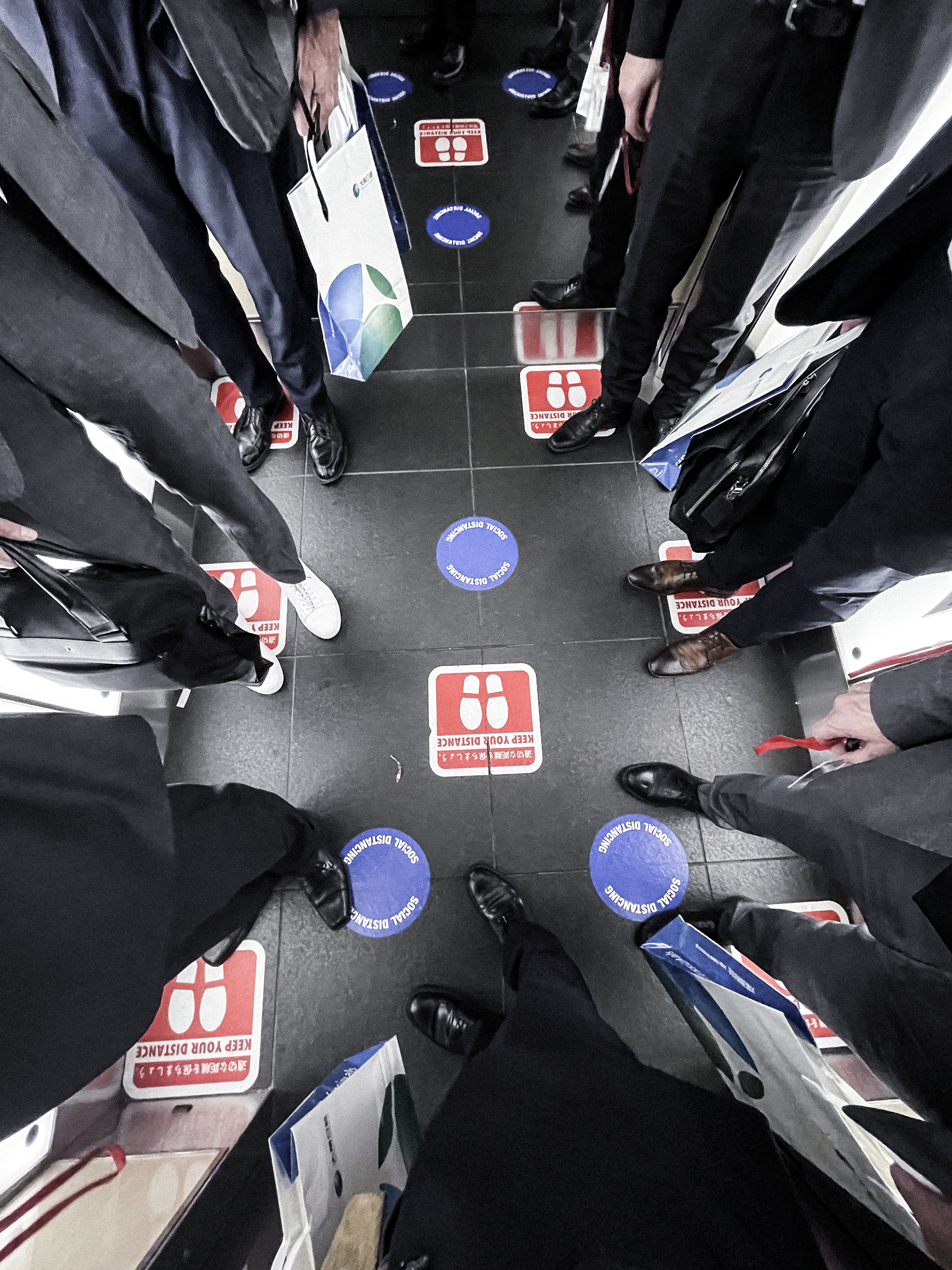Returning to Japan
View PDF
Returning to Japan
We have been looking forward to returning to Japan to meet company management. Luckily, travel restrictions were lessened just weeks prior to our arrival in Japan in late November. While the world, including Japan was in lockdown, we stayed in touch with our portfolio companies in Japan over video meetings, but nothing beats a physical presence.
In Denmark, we have been without Covid restrictions for many months, so it was a surprise that face masks were still mandatory on the plane and Covid restrictions are still prevalent in all aspects of Japanese society. In most meetings, we were not only wearing masks but also separated by plexiglass when having conversations with Japanese companies. Japan continues to be demographically challenged but is a global power house in our identified mega-trend of Productive and Digital Society with robot technologies, global MedTech champions, and high-tech components and materials providers.
The return of inflation
The reopening of the global economy has put upward pressure on inflation in Japan after many years of fighting deflation. Many companies we spoke with were uncertain how to handle the raising of input prices because it would be difficult from a cultural perspective to raise prices for customers that they knew would suffer as a result. The industrial gas provider Nippon Sanso gave an excellent insight into their new growth strategy, but after 25 years of low/no growth, there was acknowledgement of the challenges of raising prices in Japan. We have invested in the German/American competitor Linde where price increases are part of the regular business and the only way to secure profitable long-term growth.
Hoya – The master of glass
Hoya specializes in perfecting the use of glass within health care (eyeglass lenses, contact lenses, medical endoscopes) and IT; mask blanks (a glass substance used in chip production to filtrate light) and hard disk drives. There is intense competition within all technologies. Nevertheless, Hoya is the absolute leader in mask blanks to semiconductor production and has a 100% market share within the newest and most advanced 2 nm EUV mask blanks. The company is benefitting from the continuous demand growth of semiconductors and to the huge investments being made to diversify the semiconductor production out of Taiwan. Semiconductor sales are cyclical, but the CEO was very clear in his communication that it’s an important driver for Hoya that more companies besides Intel are developing their own chip (Amazon, Alphabet, Apple, etc.) because that requires more individualized masks.
Shareholder-friendly capital allocation is a rare trait of Japanese companies, but over the last eight years Hoya has shrunk its share count and continued to buy back more than 3% of its shares in 2022. The CEO assured us that management will continue its strategy of returning excess cash to shareholders and will most likely be more active in trimming the current portfolio and acquiring new businesses within health care and IT. Hoya is managing its business from a position of strength without interest-bearing debt and has a massive cash pile that it can deploy whenever interesting opportunities arise.
Sony – ready for the metaverse
We met with the CFO of Sony who gave us a reassuring understanding of their car joint venture investment with Honda. The ambition is to release an electric vehicle by 2026 based on Honda’s platform. The auto industry is not known for high re-turns, and we were initially somewhat skeptical about the JV investment. Sony has the ambition to become a supplier of sensors and entertainment (music, movies, games, etc.) to the whole industry, and it will give them valuable information about car usage. They see their investments in the Honda JV as an ambitious car program but also partly as an R&D project that can help them gain success in a broader sense. The car investment is relatively small in the overall scheme of things, and Sony mentioned that they were willing to invite new investors on board if more capital was needed. Sony will never become a car company, but it could become a valued industry for them over time.
The meeting left us reassured about the whole investment case in Sony with music, motion pictures, and games enjoying synergies as some game characters are being used in movies while music is integrated into games and games can inspire new ways of communication. Sony seems to be at the forefront of the metaverse by extending its broad intellectual property rights, which will most likely add to earnings. We look forward to innovation within the car industry and think that Sony will be able to make driving more entertaining. The Sony/Honda car seems quite cool and could be a new rising star in an old industry – see above.
Japan at the forefront
Japan is known for its high technological and automated focus. It was interesting to walk through the production and exhibition floor of several companies to see the advanced technologies and robots in use, making investing more tangible. Time will tell if businesses in Japan are ready to raise prices or if inflation will put extra pressure on margins. We got the sense that the management of both Sony and Hoya will innovate and raise prices where needed to keep earnings growing.
We were once again impressed by the train system’s punctuality, which moved seamlessly from Tokyo to Kyoto and back. Economic growth has been weak over the years, but Japan is still at the forefront of technological developments and offers several interesting investment opportunities for global investors.

